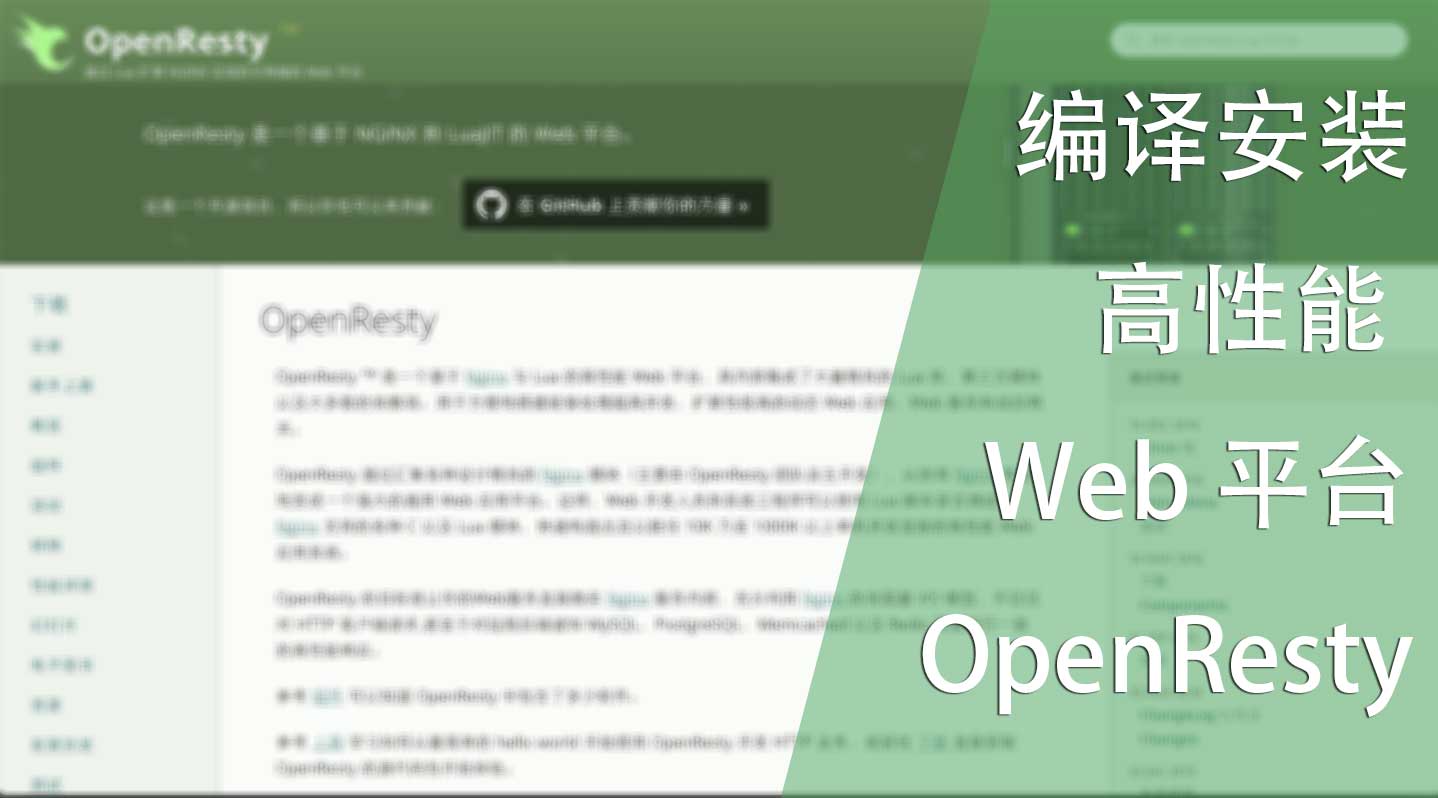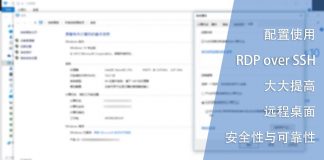0x01 前言
有时在使用nginx测试时需要用到基于Lua所编写的程序,但使用nginx单独编译Lua又过于麻烦。在经过一番 Google后发现新大陆:OpenResty
0x02 准备
#新建文件夹 [root@openresty ~]# mkdir -p codex/openresty #进入文件夹 [root@openresty ~]# cd codex/openresty/ #下载文件 [root@openresty openresty]# wget https://openresty.org/download/openresty-1.11.2.2.tar.gz #解压文件 [root@openresty openresty]# tar zxvf openresty-1.11.2.2.tar.gz #进入源文件夹 [root@openresty openresty]# cd openresty-1.11.2.2/
0x03 编译安装
绝大多数组件已经包含在OpenResty中,但有一些组件需要手动添加编译参数,请参考以下链接:
另外OpenResty是基于Nginx所开发的,所以支持所有Nginx组件,手动添加编译参数即可:
#configure [root@openresty openresty-1.11.2.2]# ./configure --prefix=/usr/local/nginx --sbin-path=/usr/sbin/nginx --conf-path=/usr/local/nginx/nginx.conf --pid-path=/var/run/nginx.pid --error-log-path=/var/log/nginx/error.log --http-log-path=/var/log/nginx/access.log --lock-path=/var/lock/nginx.lock --with-luajit --with-http_gunzip_module --with-pcre --with-pcre-jit --with-http_perl_module --with-ld-opt="-Wl,-E" --with-http_realip_module --with-http_secure_link_module --with-http_slice_module --with-http_ssl_module --with-http_stub_status_module --with-http_sub_module --with-http_v2_module --with-http_addition_module --with-http_xslt_module --with-http_image_filter_module --with-http_geoip_module --with-http_dav_module --with-http_flv_module --with-http_mp4_module --with-http_gzip_static_module --with-http_auth_request_module --with-http_random_index_module --with-select_module --with-poll_module --with-file-aio --with-http_degradation_module --with-libatomic --http-client-body-temp-path=/var/tmp/nginx/client_body --http-proxy-temp-path=/var/tmp/nginx/proxy --http-fastcgi-temp-path=/var/tmp/nginx/fastcgi --http-uwsgi-temp-path=/var/tmp/nginx/uwsgi --http-scgi-temp-path=/var/tmp/nginx/scgi #编译 [root@openresty openresty-1.11.2.2]# make #安装 [root@openresty openresty-1.11.2.2]# make install
通过以下命令检查安装情况:
[root@openresty ~]# nginx -v nginx version: openresty/1.11.2.2
openresty 1.11.2 是基于Nginx 1.11.2所开发的,这个可以参考openresty各个版本的ChangeLog,以下是openresty 1.11.2的ChangeLog:
0x04 配置
新建nginx临时文件夹:
[root@openresty ~]# mkdir -p /var/tmp/nginx
修改nginx主配置文件:
user nginx;
pid /var/run/nginx.pid;
worker_processes 2;
worker_rlimit_nofile 65534;
events {
use epoll;
worker_connections 65534;
multi_accept on;
}
http {
client_body_buffer_size 16k;
client_body_timeout 30s;
client_header_buffer_size 2k;
large_client_header_buffers 4 16k;
client_header_timeout 30s;
client_max_body_size 8m;
keepalive_timeout 300;
output_buffers 2 16k;
send_timeout 60s;
server_names_hash_bucket_size 128;
reset_timedout_connection on;
#gzip
gzip on;
gzip_min_length 512;
gzip_buffers 16 4k;
gzip_comp_level 4;
gzip_proxied any;
#cache
open_file_cache max=204800 inactive=60s;
open_file_cache_errors on;
open_file_cache_min_uses 1;
open_file_cache_valid 60s;
#proxy
proxy_buffer_size 32k;
proxy_buffers 8 32k;
proxy_busy_buffers_size 32k;
proxy_cache_path /var/tmp/nginx/proxy_cache levels=1:2 keys_zone=content:200m inactive=30d max_size=10g;
proxy_cache_path /var/tmp/nginx/proxy_cache/enginx levels=1:2 keys_zone=enginx:200m inactive=30d max_size=10g;
proxy_cache_key $host$proxy_host$uri$is_args$args;
proxy_connect_timeout 60s;
proxy_read_timeout 300s;
proxy_send_timeout 300s;
proxy_temp_file_write_size 32k;
proxy_temp_path /var/tmp/nginx/proxy_temp;
proxy_set_header Host $host;
proxy_set_header X-Real-IP $remote_addr;
proxy_set_header X-Forwarded-For $proxy_add_x_forwarded_for;
proxy_set_header X-Scheme $scheme;
proxy_set_header Accept-Encoding '';
real_ip_header X-Forwarded-For;
#log
log_format main '$remote_addr - $remote_user [$time_local] "$request" $http_host '
'$status $body_bytes_sent "$http_referer" '
'"$http_user_agent" "$http_x_forwarded_for" '
'$upstream_addr $upstream_status $upstream_cache_status "$upstream_http_content_type" $upstream_response_time > $request_time';
open_log_file_cache max=204800 inactive=20s valid=1m min_uses=1;
error_log /var/log/nginx/error.log error;
#host configure file
include /usr/local/nginx/conf.d/*.ngx.conf;
#main configure
server_tokens off;
sendfile off;
tcp_nopush on;
tcp_nodelay off;
charset utf-8;
include /usr/local/nginx/mime.types;
default_type text/html;
}
新建vhost目录:
[root@openresty ~]# mkdir /usr/local/nginx/conf.d
新建vhost:
server {
listen 80;
server_name www.web-t1.t.com;
return 301 http://web-t1.t.com$request_uri;
}
server {
listen 80;
server_name web-t1.t.com;
root /usr/local/html/web-t1.t.com/public_html/;
access_log /usr/local/html/web-t1.t.com/logs/ngx_access.log main;
location / {
index index.html;
}
}
0x05 启动、重启与关闭
启动并不会返还任何内容,如果遇到错误则会返还错误信息。通过以下命令启动nginx:
[root@openresty ~]# nginx
通过以下命令重新加载,在重新加载之前请先测试配置文件是否合规:
#检查配置文件合规性 [root@openresty ~]# nginx -t nginx: the configuration file /usr/local/nginx/nginx.conf syntax is ok nginx: configuration file /usr/local/nginx/nginx.conf test is successful #重新加载 [root@openresty ~]# nginx -s reload
通过以下命令停止nginx:
[root@openresty ~]# nginx -s quit
0x06 结语
如果有需要,还可以参考以下文章安装naxsi:
0x07 相关视频
- EP10 – Centos7 编译安装OpenRest (nginx) 与初始配置
https://www.bilibili.com/video/av11101929/























